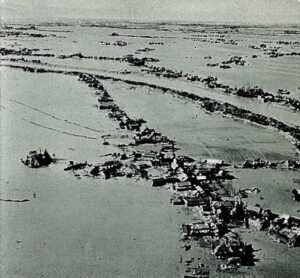
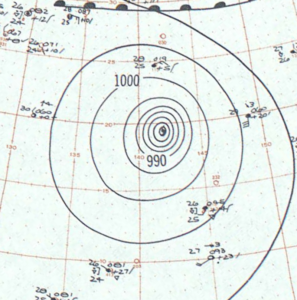 Typhoon Vera, also known as the Isewan Typhoon, was an extraordinarily powerful tropical cyclone that hit Japan in September 1959. It became the most intense and deadliest typhoon to ever make landfall in the country, and it remains the only one to have done so as a Category 5 equivalent storm. The typhoon caused unprecedented catastrophic damage, severely impacting the Japanese economy, which was in the midst of post-World War II recovery. Following Vera, Japan underwent significant reforms in disaster management and relief operations, establishing a new standard for handling future storms. The country is still well known for its disaster preparedness.
Typhoon Vera, also known as the Isewan Typhoon, was an extraordinarily powerful tropical cyclone that hit Japan in September 1959. It became the most intense and deadliest typhoon to ever make landfall in the country, and it remains the only one to have done so as a Category 5 equivalent storm. The typhoon caused unprecedented catastrophic damage, severely impacting the Japanese economy, which was in the midst of post-World War II recovery. Following Vera, Japan underwent significant reforms in disaster management and relief operations, establishing a new standard for handling future storms. The country is still well known for its disaster preparedness.
Typhoon Vera formed on September 20 between Guam and Chuuk State, initially moving westward before shifting to a northerly path and reaching tropical storm status the next day. The storm then took a turned westward, rapidly intensifying to peak intensity on September 23 with maximum sustained winds that made it Category 5 hurricane. Maintaining its strength, Vera veered northward and made landfall near Shionomisaki on Honshu on September 26. Influenced by atmospheric winds, the typhoon briefly entered the Sea of Japan, then recurved eastward, making a second landfall on Honshu. Crossing over land significantly weakened Vera, and 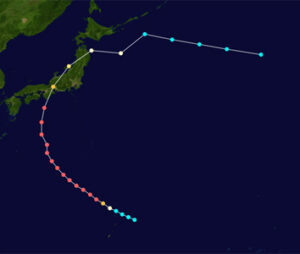
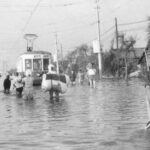 upon reentering the North Pacific Ocean that same day, it became an extratropical cyclone on September 27, with its remnants lasting two more days.
upon reentering the North Pacific Ocean that same day, it became an extratropical cyclone on September 27, with its remnants lasting two more days.
Although Vera’s path into Japan was accurately predicted, the limited telecommunications coverage, combined with the Japanese media’s lack of urgency and the storm’s severity, significantly hindered evacuation and disaster prevention efforts. The flooding from the storm’s peripheral rainbands started affecting river basins before the typhoon made landfall. As it hit Honshu, Vera unleashed a powerful storm surge, destroying many flood defenses, flooding coastal areas, and causing ships to sink. Vera resulted in damages totaling $600 million US dollars, which was equivalent to $6.27 billion US dollars in 2023. The death toll from Vera is uncertain, but current figures suggest the typhoon caused over 5,000 deaths, ranking it among the most lethal typhoons in Japan’s history. Additionally, it injured nearly 39,000 individuals and also displaced around 1.6 million people.
Immediately after Typhoon Vera, the Japanese and American governments launched relief operations. The typhoon’s flooding led to localized outbreaks of diseases such as dysentery and tetanus. These epidemics, along 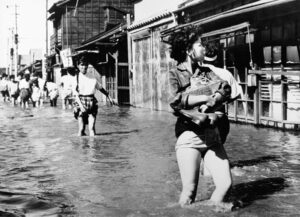
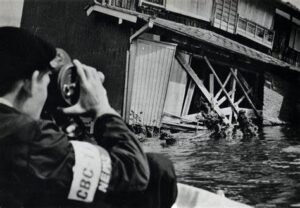 with obstructive debris, hindered the relief process. In response to the extensive damage and casualties caused by Vera, the National Diet, which is the national legislature of Japan, enacted laws to better support the impacted areas and reduce the impact of future disasters. This led to the creation of the Disaster Countermeasures Basic Act in 1961, which laid down guidelines for disaster response in Japan, including forming the Central Disaster Prevention Council.
with obstructive debris, hindered the relief process. In response to the extensive damage and casualties caused by Vera, the National Diet, which is the national legislature of Japan, enacted laws to better support the impacted areas and reduce the impact of future disasters. This led to the creation of the Disaster Countermeasures Basic Act in 1961, which laid down guidelines for disaster response in Japan, including forming the Central Disaster Prevention Council.


Leave a Reply